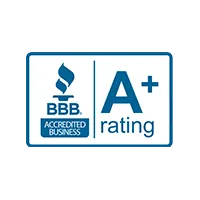Welcome, Chicago businesses, to a guide designed to make your office move as seamless as possible! Whether you’re relocating within the city or moving to the Windy City from elsewhere in Illinois, Wolley Movers is here to help you navigate the process. With our step-by-step guide, you’ll be well-prepared to tackle every aspect of your office relocation in zip codes 60694 and 60697.
Step 1: Establish a Timeline
The first step in planning your office move is to establish a realistic timeline. Start by determining your desired move-in date and work backward to create a detailed schedule. Consider factors such as lease agreements, employee availability, and the complexity of your office setup. Planning ahead will ensure that you have ample time to coordinate all aspects of the move and minimize disruption to your business operations.
Once you have a timeline in place, it’s essential to communicate it to all stakeholders involved in the move. This includes employees, clients, vendors, and service providers. Keeping everyone informed about the move schedule will help ensure that everyone is on the same page and can plan accordingly. Consider sending out regular updates via email, posting notices in common areas, and holding meetings to discuss the timeline and address any questions or concerns.
Step 2: Assemble Your Moving Team
Next, assemble a dedicated team to oversee the moving process. Assign key roles and responsibilities to team members, including project managers, IT specialists, and department heads. Communication is key during this stage, so make sure everyone is on the same page and knows their role in the move.
Consider holding regular team meetings to discuss the progress of the move, address any challenges or concerns, and ensure that everyone is working together toward a common goal. Encourage open communication and collaboration among team members to foster a positive and productive moving experience.
Step 3: Conduct a Needs Assessment
Before packing a single box, conduct a thorough needs assessment to determine your requirements for the new office space. Consider factors such as square footage, layout, amenities, and accessibility. This will help you identify the ideal location and ensure that your new office meets the needs of your business and employees.
Take the time to survey your current office space and identify any pain points or areas for improvement. Consider conducting interviews or surveys with employees to gather feedback on their workspace preferences and requirements. This information will help inform your decision-making process and ensure that your new office is designed to support productivity and collaboration.
Step 4: Create a Budget
Moving can be expensive, so it’s essential to create a detailed budget to guide your spending. Factor in costs such as moving services, packing supplies, furniture purchases, and any necessary renovations or upgrades to the new office space. Be sure to account for unexpected expenses to avoid any financial surprises along the way.
Consider working with a financial advisor or accountant to create a comprehensive budget that takes into account all potential costs associated with the move. Review your budget regularly to track expenses and identify any areas where you may need to adjust your spending to stay within budget.
Step 5: Notify Stakeholders
Once your move is officially confirmed, it’s time to notify all relevant stakeholders, including employees, clients, vendors, and service providers. Keep everyone informed about the move timeline, logistics, and any changes to business operations. Open communication will help minimize confusion and ensure a smooth transition for all parties involved.
Consider creating a dedicated communication plan to keep stakeholders informed throughout the moving process. This may include regular email updates, announcements on your company website or social media channels, and in-person meetings or town hall sessions to address questions or concerns. By keeping stakeholders informed and engaged, you can build trust and confidence in the moving process and ensure a successful transition to your new office.
Step 6: Coordinate with Building Management
If you’re moving into a new office building, be sure to coordinate with the building management team well in advance of your move-in date. Discuss logistical details such as loading dock access, elevator reservations, and parking arrangements for moving trucks. Building management can also provide valuable insight and assistance throughout the moving process.
Take the time to schedule a walkthrough of your new office space with the building management team to familiarize yourself with the layout and discuss any special requirements or considerations for the move. This will help ensure that everyone is on the same page and that the move goes smoothly on moving day.
Step 7: Plan Your IT Transition
Moving your IT infrastructure can be one of the most challenging aspects of an office relocation. Work closely with your IT team or service provider to develop a detailed plan for transferring servers, computers, phones, and other equipment to the new office. Consider factors such as internet connectivity, data security, and system downtime to minimize disruption to your business operations.
Start by conducting an inventory of all IT equipment and assets to be moved, including cables, peripherals, and software licenses. Develop a timeline for shutting down and packing up equipment at your current office and setting up and testing equipment at your new office. Be sure to communicate any planned IT outages or disruptions to employees and clients to minimize impact on productivity and service levels.
Step 8: Pack Strategically
As moving day approaches, it’s time to start packing up your office. Begin by decluttering and organizing your workspace to streamline the packing process. Use high-quality packing materials to protect fragile items and label each box clearly with its contents and destination in the new office. Packing strategically will save time and ensure that everything arrives safely at your new location.
Consider enlisting the help of professional movers like Wolley Movers to assist with packing and transporting your office belongings. Our experienced team can handle everything from packing up desks and filing cabinets to disassembling and reassembling furniture. With our expertise and attention to detail, you can trust that your office items will be packed safely and efficiently for the move.
Step 9: Coordinate with Movers
Hiring a professional moving company like Wolley Movers can make your office relocation much smoother. Coordinate with your chosen movers well in advance to schedule packing, loading, transportation, and unpacking services. Provide them with detailed instructions and access to both your current and new office locations to ensure a seamless transition.
Consider scheduling a pre-move meeting with your moving company to review the moving plan and address any questions or concerns. Provide them with a detailed inventory of all items to be moved, including any special requirements or considerations for fragile or sensitive equipment. By working closely with your movers, you can ensure that your office move is completed on time and on budget.
Step 10: Settle into Your New Office
Once you’ve arrived at your new office, take some time to settle in and get organized. Unpack essential items first, such as office supplies, electronics, and furniture, to ensure that your team can get back to work as quickly as possible. As you unpack, take note of any additional needs or adjustments to the office setup and address them promptly.
Consider holding a team meeting or orientation session to familiarize employees with the new office layout and amenities. Encourage employees to personalize their workspaces and provide feedback on any improvements or changes they’d like to see. By involving your team in the transition process, you can help them feel invested in the new office and excited about the opportunities it presents.
Conclusion
Planning an office move in Chicago may seem daunting, but with careful planning and preparation, it can be a smooth and successful process. By following this step-by-step guide and working closely with your moving team and service providers, you’ll be well-equipped to navigate every aspect of your office relocation. At Wolley Movers, we’re here to support you every step of the way. Contact us today to learn more about our office moving services and how we can help make your move a success.








